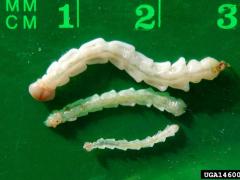Japanese Stiltgrass
Microstegium vimineum
Microstegium vimineum

In October 2014, researchers at Wright State University discovered that an invasive insect called the emerald ash borer (EAB) was attacking white fringetrees (Chionanthus virginicus) in addition to ash trees. This was big news at the time. The EAB had already killed tens of millions of ash trees, and the fact that it could harm another species made it even more devastating.
Iris pseudacorus
Anthriscus sylvestris
Lonicera sp.
Lythrum salicaria
Acer platanoides
Microstegium vimineum
Fallopia japonica
Berberis thunbergii